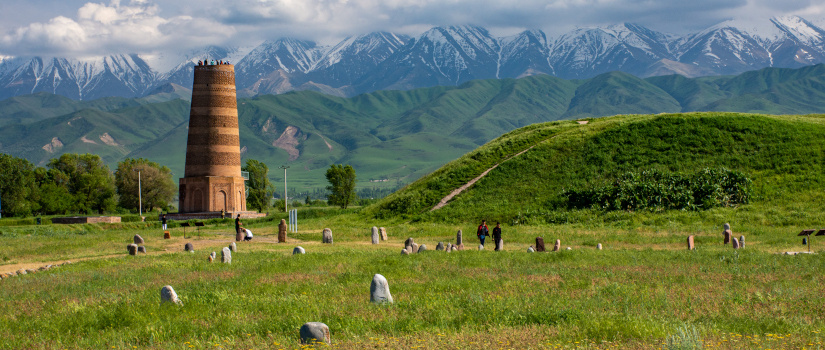David Hansen has been awarded a National Science Foundation Graduate Research Fellowship. His research focuses on how the Black Death spread by examining 13-14th century Christian cemeteries in northern Kyrgyzstan.
What is your fellowship project about?
I will be examining two 13-14th century Christian (Church of the East) cemeteries in northern Kyrgyzstan, where an outbreak of the Black Death occurred in the late 1330s, just prior to the well-known European pandemic. These cemeteries are located in cities which were located along the northern branches of the Silk Roads. I will examine variation in mortality rates to determine whether there are differences based on age, sex, or frailty during the Black Death period and how those patterns compare to those for earlier burials at the same site. I am also interested in the role of trade networks on the spread of disease across Afro-Eurasia, since these cemeteries are located along well-established trade networks.
What prompted you to get involved in your project's research topic?
As an undergraduate, my primary area of interest was medieval Chinese archaeology, but during the course of my studies I became fascinated by trade routes from China through Central Asia to the rest of Afro-Eurasia. After graduation, I moved to Kazakhstan and worked in a university anthropology department, taking part in two archaeological excavations over the summer, one in Kazakhstan and the other in Uzbekistan. These experiences further solidified my interest in medieval Central Asia. After I left that position, I moved to Kyrgyzstan for a year on a Fulbright English Teaching Assistant grant, where I taught linguistics at a university. While living there, I learned of the existence of Black Death cemeteries in the country from colleagues at another university, and I became interested in learning more about epidemics in Central Asia. These experiences brought up more and more questions that have been so far unanswered about the Black Death and Central Asian bioarchaeology more broadly, and that has motivated me to get involved in this research topic.
One of the project's objectives is to learn how disease moved along medieval trade routes. How were trade communities related to the spread of disease?
This is a great question, and one that has not been explored in depth (to the best of my knowledge). It is regularly cited in historical literature that the Black Death spread from Central Asia or China to Europe via trade networks, which makes sense but this assumption does not seem to have been formally studied, certainly not in anthropology. In this particular instance, I’m interested in whether there is a relationship between the Church of the East, known for having longstanding ties to trade, and disease movement in Central Asia, even if on a small scale between regional communities. Of my research questions, this one will likely be the hardest to address but also the most exciting.

On your CV, I read that you studied five languages (i.e., French, Kyrgyz, Mandarin, Russian, Spanish). How is language learning related to your research interests?
My interest in language learning actually predates my introduction to anthropology. I have always been interested in learning about the ways in which other people experience the world, which is what led me to anthropology. Learning new languages is something that allows me to interact with people and media that otherwise would have been inaccessible to me. I have studied at least a dozen languages to varying degrees of skill since I started university in 2010, a handful formally in classes and others I’ve picked up over the course of living and working abroad. This has been particularly useful in the course of gathering resources for my research, as most of the source materials available are not published in English, so being able to read articles in a variety of languages has been very beneficial. More importantly, I believe it is crucial to know the language(s) of the communities in which you work, both in order to read local scholarship/perspectives on the topic but also to share your own findings to the community from which the data came.
Are there any myths or misconceptions about pandemics that you'd like to clear up?
I think one of the most prominent misconceptions related to my research is the misconception that the Black Death was primarily a European pandemic. The Black Death occurred across the whole of Afro-Eurasia, but most research has been dedicated to European contexts where data is more easily accessible. There is still a ton that we don’t know about the pandemic outside of Europe that needs to be examined by researchers across disciplines.
Another misconception is that pandemic disease kills indiscriminately. Both in the past and in our current situation with COVID-19, pandemics highlight the inequalities in society, as disease disproportionately affects marginalized or otherwise disadvantaged groups.
Photo Credit 1: Burana Tower in Tokmok, Kyrgyzstan. Burana Tower is Hansen's first research site. Image by David Hansen
Photo Credit 2: Bishkek, Kyrgyzstan. Bishkek's urban expansion has covered Kara-Djigach, Hansen's second research site. Image by David Hansen
